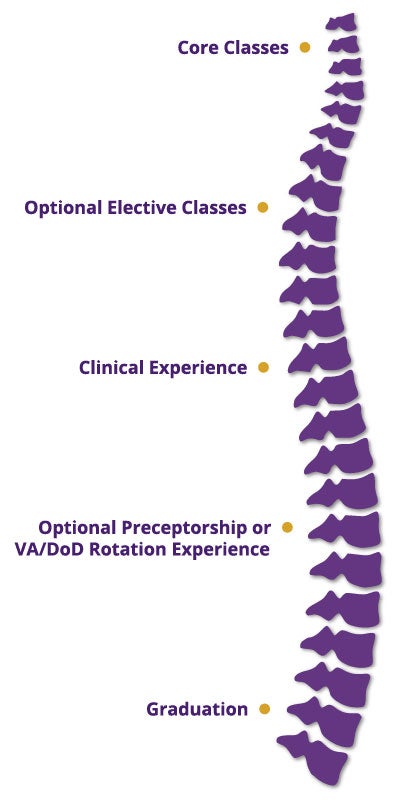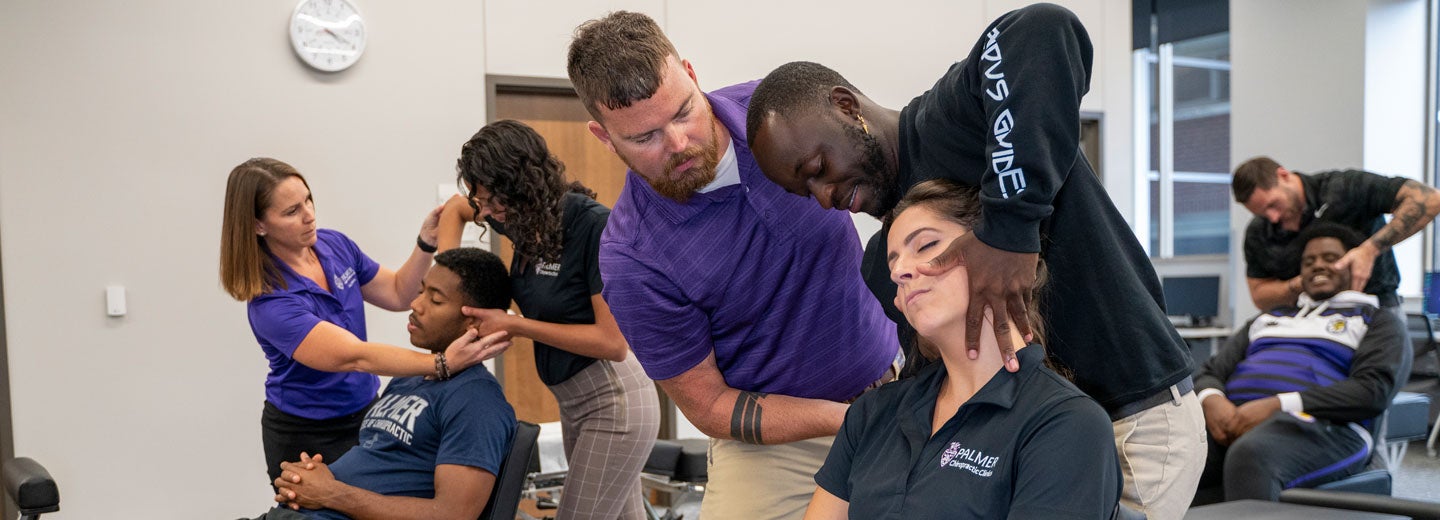Palmer’s Curriculum Prepares You for Success

 At Palmer, learning goes beyond the classroom. Students begin their hands-on training early in the curriculum and have the opportunity to refine their clinical skills in student clubs or during extra-curricular lab time – all under the guidance of Palmer faculty. Students enter the Palmer Chiropractic Clinics in their seventh trimester to gain real clinical experience.
At Palmer, learning goes beyond the classroom. Students begin their hands-on training early in the curriculum and have the opportunity to refine their clinical skills in student clubs or during extra-curricular lab time – all under the guidance of Palmer faculty. Students enter the Palmer Chiropractic Clinics in their seventh trimester to gain real clinical experience.
Students attend classes in person year-round to earn their Doctor of Chiropractic degree in approximately three and one-third years. The program is 10 trimesters long with a curriculum that blends chiropractic philosophy with hands-on clinical skills to prepare students for success in practice.
All Palmer students become proficient in “Palmer Package” techniques. Palmer’s curriculum also offers introductions to instrument-assisted and table-assisted techniques with the option to enroll in additional technique elective courses designed to prepare you to successfully address nearly any situation you may encounter in practice.
- Diversified
- Gonstead
- Thompson
- Toggle Recoil
Elective technique courses vary by campus and some may not be offered during a particular session. In general, the following elective technique courses are offered:
Palmer Main Campus
- Activator Methods
- Advanced Soft Tissue
- Atlas Orthogonal
- Blair
- Flexion Distraction
- Logan Basic
- McKenzie MDT Parts A – D
- National Upper Cervical Chiropractic Association (NUCCA)
- Pettibon
- Sacro Occipital Technique (SOT)
- Thompson
Palmer Florida Campus
- Advanced Activator
- Advanced Thompson
- Advanced Flexion/Distraction
- Sports Elective Course
- Myofascial Trigger Point
- Comprehensive Spinal Rehab
- SOT-Sacro Occipital Technique
- McKenzie A and B
- Instrument Assisted Soft Tissue Mobilization
- Advanced Gonstead
- Extra Spinal Adjusting

Anatomy and Movement Science
Anatomy and movement science are critical areas of study for chiropractic students. Palmer’s program uses human cadavers in learning in addition to anatomical models and virtual, 3D learning environments. Students receive free, unlimited access to Complete Anatomy, a virtual, 3D learning platform that’s accessible from almost any device, anytime and anywhere.
Our academic curriculum prepares students for a successful career in chiropractic, including:
- Patient-health assessment, including health history, physical examination, and necessary imaging, lab and diagnostic studies
- Patient-centered care and management plans
- Manual therapeutic procedures such as chiropractic adjustment, manipulation, mobilization and soft-tissue techniques, by hand and with instruments
- Use of complementary measures such as passive modalities, exercise and rehabilitation, nutritional counseling and supplementation
- Promotion of health, wellness and disease prevention

